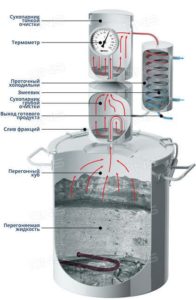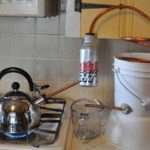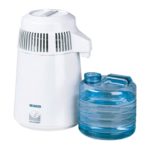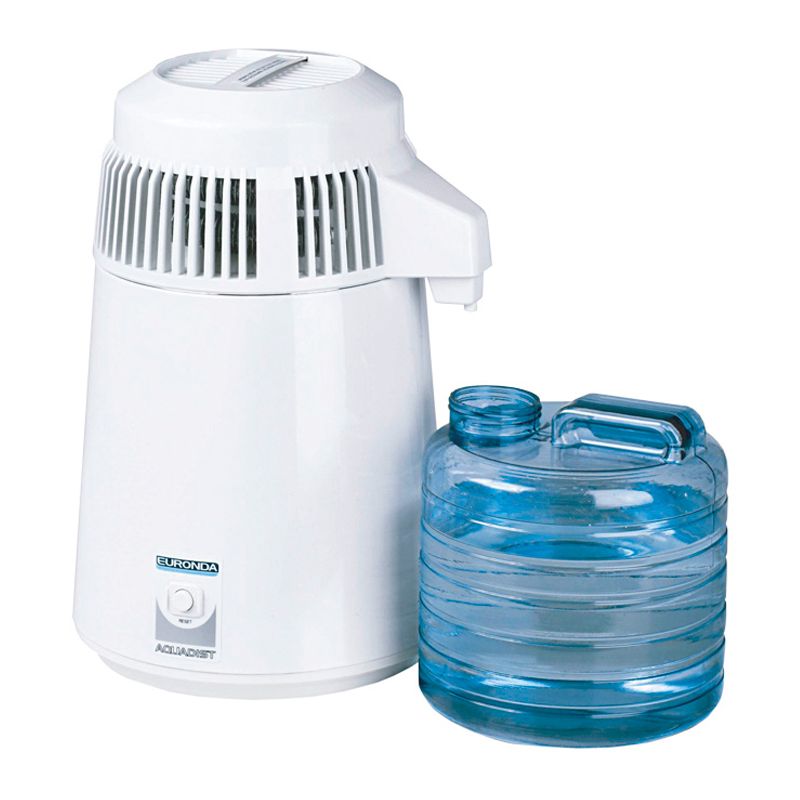Which distiller to choose for your home
Thanks to five selection criteria, you can buy an excellent distiller for use at home:
 Volume, power of the device and dimensions. Such parameters depend on the desired frequency of distillation of moonshine. Key rule: other things being equal, price, weight and overall dimensions are determined by the performance of the unit.
Volume, power of the device and dimensions. Such parameters depend on the desired frequency of distillation of moonshine. Key rule: other things being equal, price, weight and overall dimensions are determined by the performance of the unit.- Material base: aluminum, stainless steel and copper.
- Design features depend on the situation, which can both simplify and complicate the process of distilling moonshine. A device with separate modules is easier to clean. The presence of drain taps on the cube and steam tank also greatly simplifies maintenance.
- Checking product documents from the supplier.
- Functional orientation, which depends on several types of moonshine units:
- The classic one, which consists of a pair of components fastened together - a cube that distills liquid and a coil.
- A unit with a steam chamber, which differs from the traditional one by the presence of an auxiliary module - a steam chamber. This element is presented in the format of an empty container of a given volume, which is connected from above by tubes to a coil and a cubic vessel.
- Alambika is a copper-type distiller whose top is created in the form of a dome. Used to create cognacs or whiskey.
- A mash column is a moonshine installation in which a modular cooling system is embodied in the format of a vertical tube with a reverse refrigeration component mounted on top, which divides the liquid into sections at the time of distillation. They are used to make sugar moonshine, chacha, and cognac, which preserves the aroma and taste for a long time.
- A distillation column, which has the shape of a cylindrical vessel equipped inside with heat exchange mechanisms that divide the liquid into sections with an approximate boiling point.
The content of the article
Distiller operating mechanism
The classic apparatus for distilling moonshine works on the principle: the mash in the cube is heated to a temperature at which the alcohol can boil, then the steam is cooled in a coil. The result is moonshine liquid with a maximum strength of 80 degrees in the stream.
REFERENCE. During distillation, it will not be possible to obtain the purest alcohol, since the drink contains other impurities. This circumstance has a positive effect on the consistency of taste and smell, but has a bad effect on the final result, since along with “good” additives, harmful components akin to acetone and fusel oils penetrate into moonshine.
The steamer produces moonshine at the maximum boiling point of ethyl alcohol, which is higher than that of most dangerous elements. When harmful additives penetrate into the apparatus, they condense there, but are again unable to boil, because thermal energy is wasted on the evaporation of alcohol.

Capacity volume
During distillation, each unit is allowed to be filled to 80% of the total volume.In particular, 12 liters of mash can be distilled per cube of 15 liters. This volume is not so small, since if you divide the mash into two distillation processes, then this will turn out to be a more practical option than purchasing one huge apparatus, for example, distilling moonshine no more than twice a week.
Material of the boiling vessel, body and distillate jug
The best materials for distilling moonshine are two metals that do not react with ethyl - stainless steel and copper. The stainless steel material base pleases the owner with a long service life and reliability of the installation, which will require minimal maintenance. Copper, in turn, can quickly heat up and cool down, which significantly reduces the loss of time for distillation.
Equipment
A traditional distiller consists of several interconnected elements - a cube for distilling liquid and a coil. Unit with a steamer contains an empty container of a certain volume, which is attached from above by tubes to the coil and cube.

Now you can easily decide which device to choose for your home, because you are familiar with their main features and selection options.





